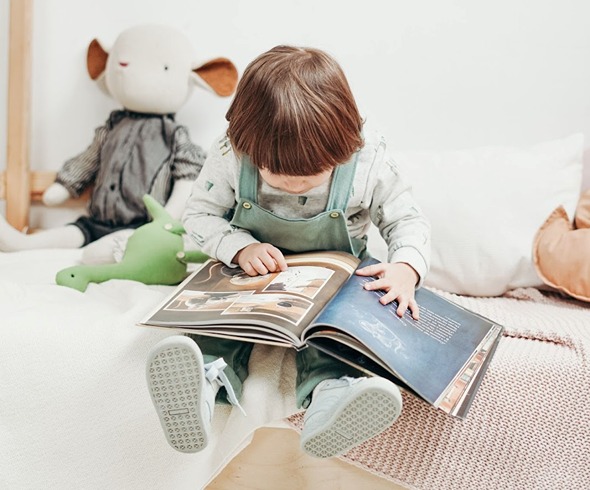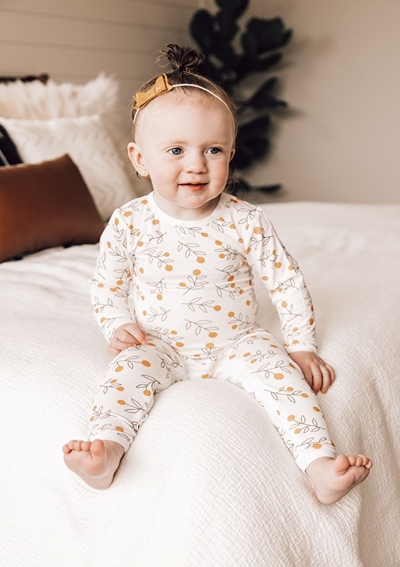How to Make a Toddler’s Transition to a Big Kid Bed Safe
Transitioning your toddler to a big kid bed is a major milestone. As parents, ensuring this move is as safe and comfortable as possible can be a challenging task. It’s a significant shift not only for your child but for you as well.
Given the importance of a good night’s sleep to your child’s development and the peace of mind it brings to you, let’s dive into how to make this transition smooth and safe for your little one.
How Do You Know Your Child is Ready?
You might read to wait as long as possible to switch your toddler from the crib to a bed. But, if your little one is attempting to climb out of the crib and getting close, it is time to switch to a crib with an opening or a big kid bed. Making the change to a bed is typically easier for children between age 2-2.5, they are much easier to teach to stay in their bed and have an easier time making the transition to a new sleeping environment.
Start with the Right Bed
The first step in creating a safe sleeping environment for your toddler is choosing the right bed. When choosing a bed, opt for a bed that is low to the ground to prevent injuries from falls. Many parents find that transitioning to a toddler bed, which uses a crib mattress, satisfies this requirement perfectly. Others opt directly for a full-sized bed with the appropriate safety measures, like railings or guardrails. Ensuring the mattress fits snugly in the frame reduces the risk of entrapment.
Ensure Safe Bed Placement
Placement of the bed within the room is paramount to ensure safety. Here are some tips to consider:
Away from Windows: Ensure the bed is not placed near windows to avoid risk of accidental falls. Securely fasten any blind or curtain cords out of reach.
Away from shelves and furniture: Keep the bed away from bookshelves, picture frames, or furniture with hard edges that may pose a risk.
Safety Railings and Bed Rails: Bed rails can help prevent falls during the night. Install these on both sides of the bed if it isn’t framed against the wall. Rail installation should be firm and secure to ensure they don’t pose additional hazards. Moreover, choose rails that leave no gaps between the mattress where your child could get caught. Beds with built in rails are ideal.
Comfort and Familiarity
Moving from a crib to a bed can be daunting for your toddler. If they are over 12 months, ensure they have a familiar blanket, a favorite stuffed animal, or other comforting items in their new bed. Continuity in the objects around them mitigates anxiety and helps them feel at home, encouraging quicker adaptation to the new sleeping arrangement. If you opt for a pillow, use a toddler sized lower profile one.

Establish a Routine
Consistency is soothing for toddlers and helps them understand what to expect. Stick to a bedtime routine that leads up to the expectation of sleeping in their big kid bed. A routine might include nightly activities like brushing teeth, taking a bath, reading a story, and snuggling their favorite lovey while settling in.
Monitor and Comfort
During the initial weeks, it’s essential to monitor your toddler reassess adjustment. You may hear fussing or calls during the night due to the unfamiliarity of the new bed. Offer comfort and reassurance, gently reinforcing that this is their new safe and secure place to sleep.
Address Nighttime Wandering
Some toddlers may take advantage of the newfound freedom a big kid bed brings by wandering around at night. Childproof the room by:
- Securing heavy furniture and properly anchoring items to the wall to avoid tipping hazards.
- Covering electrical outlets, bundling cords securely, and ensuring potentially harmful objects are out of reach.
- Installing baby gates at the bedroom door or at the top of stairs to prevent unsupervised access during the night.
Transition Gradually, If Necessary
Consider beginning the transition by involving your toddler in the process. Choices like picking out their bedding or allowing them short naps in the big bed can ease the transition. If they resist the move at first, a back-and-forth approach between crib and bed could bridge the transition gap more gently.
Pediatric Tips for a Safe Transition
Different children adapt in different ways and timelines. Consider discussing the transition with your child’s pediatrician to accommodate health-related guidance if your toddler has unique needs. Pediatricians can provide useful advice on appropriate bed heights, guarding against potential allergens that may not have occurred to you, and overall sleep health through the transition phase.
The Mental Preparation
Your mental preparedness as a parent is just as crucial as your child’s adaptability. Transitioning your toddler demands patience, consistent positive reinforcement, ample assurance, and constant vigilance. Remember, no transition is seamless, but with diligent effort and love, your child will benefit from the confidence and independence this change entails.
The move to a big kid bed is a blend of preparing a safe, comfortable sleeping space while providing emotional and physical reassurances. Graduating from a crib to a bed takes thoughtful preparation, the right approach, and understanding that every toddler adjusts in their way. Making sure the environment is hazard-free and secure will help in ensuring this milestone is marked with joy and reassurance.
Successfully transitioning your toddler guarantees safety and nurtures their growing independence, providing them (and you) a restful night filled with peace and security.
 This article was written by Jenie Boone, Founder and Tiny Duck Parenting. Jennie specializes in teaching toddlers and children to learn to sleep independently and through the night with her premier program, The Week to Sleep. Armed with a Bachelor’s Degree in Child and Adolescent Development, Jennie’s journey with toddler sleep began when she encountered a family struggling with a toddler’s bedtime woes. Seeing a gap in resources for toddlers, she became a certified sleep consultant and developed the Week to Sleep specifically tailored for toddlers in open beds. Her expertise has won her recognition on platforms like Mommy Mingle, Parentville, buybuybaby and the Google Employee Resource Group. Jennie’s mission is to simplify bedtime routines and promote healthy sleep habits for children, fostering their optimal development.
This article was written by Jenie Boone, Founder and Tiny Duck Parenting. Jennie specializes in teaching toddlers and children to learn to sleep independently and through the night with her premier program, The Week to Sleep. Armed with a Bachelor’s Degree in Child and Adolescent Development, Jennie’s journey with toddler sleep began when she encountered a family struggling with a toddler’s bedtime woes. Seeing a gap in resources for toddlers, she became a certified sleep consultant and developed the Week to Sleep specifically tailored for toddlers in open beds. Her expertise has won her recognition on platforms like Mommy Mingle, Parentville, buybuybaby and the Google Employee Resource Group. Jennie’s mission is to simplify bedtime routines and promote healthy sleep habits for children, fostering their optimal development.




